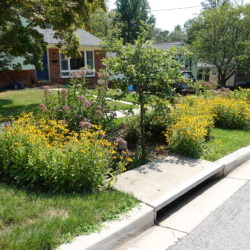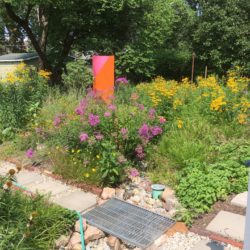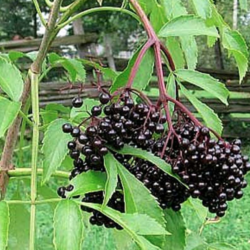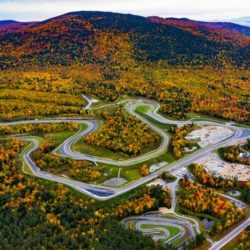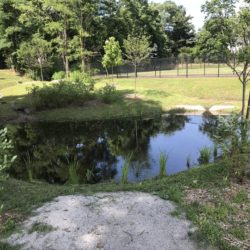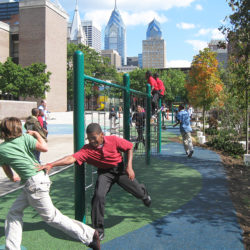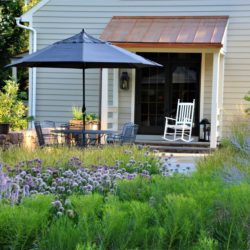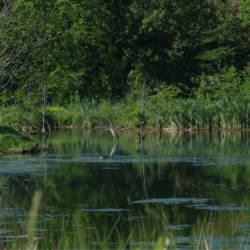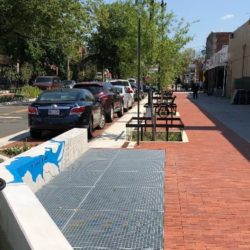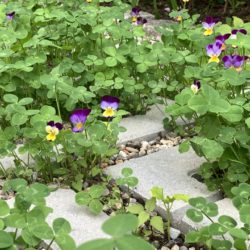Written by Zach McElgunn, ELA Staff This month’s tips, tricks, and techniques draw on the work and advice of Rosmarie Lohnes (Designer President, Helping Nature Heal). Rosmarie joined ELA members…
Managing Water in the Landscape
Clean water is a basic requirement of life, and the choices we make in our lives and in our landscapes can help or harm both above- and below-ground water supplies. Keeping water on site, preventing erosion, and reducing use of pesticides and fertilizers all contribute to improved water quality.
On Deck: The R & R Conference
Written by: Julie Snell, ELA Board Member The conference formerly known as The Mid-Atlantic ELA Conference is returning live and in person! If there was a silver lining in pandemic…
Ecological Amenity or Weedy Pit?
By Kate Cholakis and Eliza Pennypacker
Rain gardens, a type of green stormwater infrastructure (GSI), can provide habitat while reducing the amount of polluted stormwater runoff leaving a property. Why might a rain garden in the front yard be problematic? Acknowledging key differences between rain gardens and the residential “landscape norm” is key to changing perceptions.
Adjusting to a New Normal
By Cody Hayo
Throughout 2021 we have struggled to get back to a “New Normal.” The “normal” we had grown accustomed to since 2016 involved very active participation with a local stormwater grant program. This program aims to capture stormwater runoff before it reaches rivers and streams, emphasizing garden-based solutions. During the pandemic in 2020, our local stormwater grant program, which is open to residential property owners, hit a major roadblock, and the program did not accept any applications at all.
Wetland Design & Implementation
By Michael DeRosa
Effective and sustaining landscapes are informed by the surrounding environment. They are created by incorporating structural and species diversity into planting schemes to push minimalist restoration efforts to efficient results.
Private Racetrack Nestled in the White Mountains
By Mike Everhart
In 2013, Club Motorsports began construction of a private race track at the southern edge of the New Hampshire White Mountains. They designed the track with the idea in mind of a ‘country club’ for car enthusiasts.
Merging Nature-Based Solutions and Recreational Areas
By Leah Wallner
The Town of Wellesley makes updates to improve a girls’ softball field, mitigate stormwater runoff and create a habitat for wildlife. The field was bordered by a busy street, an aqueduct, a neighborhood, and mature trees which provided many landscape challenges.
Green Stormwater Infrastructure
By Anna Shipp
Our current economic downturn caused by COVID-19 and ongoing social and climate crisis demands a transformational change in everything from business practices to public policy, including how we approach stormwater management. In rebuilding our economy, the government must prioritize green stormwater infrastructure because it’s a tool that fosters job growth, public health, community well-being, and resiliency.
Revitalizing A Tired Palette
by Don Pell
Four years ago, a project inquiry brought me to a site that dreams are made of—an 18th-century colonial farmhouse beautifully restored over the past 30 years by its owners. The details of the home were meticulously curated; however, the gardens were entirely unconsidered. The home’s surroundings looked degraded and sadly suburban. Join me as I transform this landscape into an ecological oasis for the homeowners to enjoy for years to come.
Restoring the Wetlands of Morris Arboretum
by Eloise Gayer
Morris Arboretum of the University of Pennsylvania is well known for its abundance of mature trees and horticultural displays. In 2001 the Arboretum began the restoration of a drained wetland that would not only serve as a blueprint for other wetland restoration projects but also create more educational opportunities for the entire community. Learn about the history of this wetland, that was farmland at the turn of the century then one hundred years later was reverted back into a natural wetland.
More Than a Rain Garden: Green Infrastructure Addresses Environmental Problems Across Scales
by Kate Cholakis and Seth Charde
Green infrastructure is trending, achieving buzzword status within the fields of civil engineering, landscape architecture, city planning, and climate resiliency. Professionals in these fields might use this term to describe a rain garden, green roof, or plant-based sewage treatment plant. The term might also be used to describe a forested city park, restored urban stream corridor, or expanded coastal marsh. These strategies share the connecting thread of water management.
Growing Green Infrastructure
by Leslie Nemo
As cities’ interest in green infrastructure grows, so does the need to develop strategies and resources to maintain it. Urban projects designed to manage stormwater promise huge benefits as climate changes — but they also demand a new kind of care.

